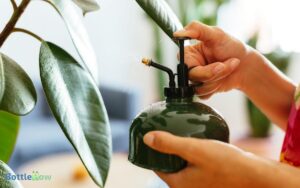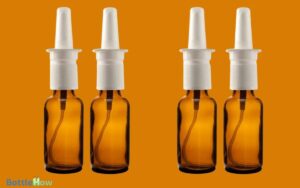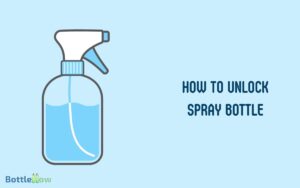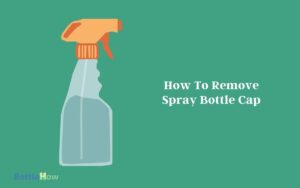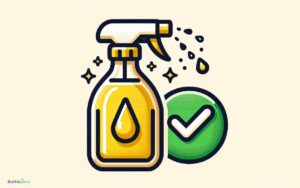DIY Pepper Spray Bottle: Crafting Tutorial!
To make your own pepper spray, start by choosing peppers high in capsaicin, like habanero or cayenne. Wear protective gear and work in a well-ventilated area.
Dry the peppers, chop them finely, and soak in high-proof alcohol to extract the capsaicin. Strain this mixture into a small spray bottle, using a funnel. Add a bit of vegetable oil and a few drops of dish soap to enhance adherence.
Store your spray in a cool, dark place, checking its potency periodically. Remember, it’s important to verify the legality of using and carrying pepper spray in your area. Discovering more can further secure safety and effectiveness.
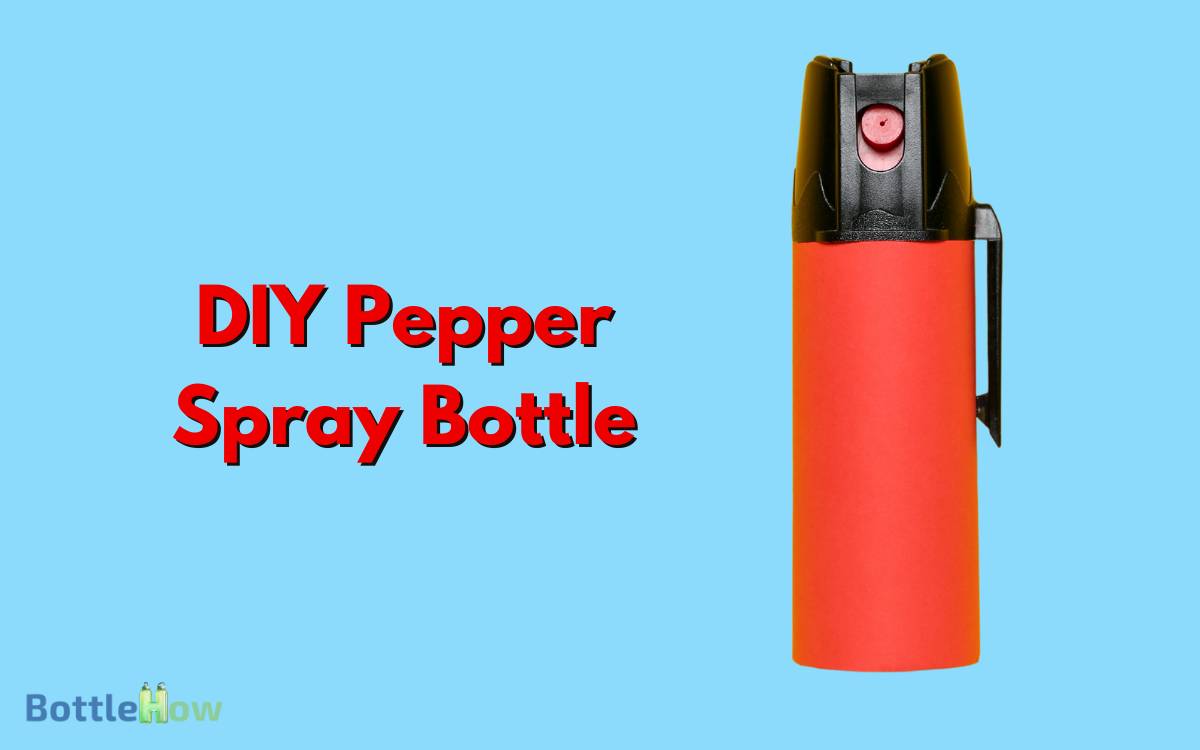
Key Takeaways
Safety Considerations
Before attempting to create your own pepper spray bottle, it’s essential you understand and adhere to the necessary safety precautions to prevent harm.
Always work in a well-ventilated area to avoid inhaling fumes, which can cause respiratory distress. Wear protective gear such as gloves, goggles, and a mask to safeguard your skin and eyes from irritation.
It’s also vital you’re aware of the legal implications of creating and carrying pepper spray, as regulations vary by location. Make sure you’re permitted to produce and possess such a defensive tool where you live.
Additionally, keep all materials out of reach of children and pets at all times. Taking these precautions helps protect both yourself and those around you.
Essential Ingredients
You’ll need to start by selecting the right peppers, focusing on those high in capsaicin for maximum efficacy.
Proper extraction methods are essential to safely obtain a potent solution without compromising its integrity.
Lastly, make sure you understand the best practices for storing your homemade pepper spray to maintain its effectiveness and safety.
Choosing the Right Peppers
Selecting the right peppers is crucial for creating an effective DIY pepper spray. You’ll want to focus on peppers that have a high capsaicin content, which is the chemical responsible for the heat.
This guarantees your spray has the necessary potency to be effective in self-defense situations.
Here is a quick guide to help you choose:
| Pepper Type | Scoville Units | Notes |
|---|---|---|
| Habanero | 100,000-350,000 | Highly effective |
| Ghost Pepper | Over 1,000,000 | Extremely potent |
| Cayenne | 30,000-50,000 | Readily available |
| Jalapeño | 2,500-8,000 | Mild but usable |
Choose wisely to balance effectiveness and manageability. Remember, your goal is to serve and protect, not to harm unnecessarily.
Capsaicin Extraction Methods
To extract capsaicin effectively, you’ll need to follow a precise method that guarantees maximum potency from your chosen peppers. Start by drying your peppers completely, as moisture can dilute capsaicin’s strength.
Once dried, don a pair of gloves to protect your skin and finely chop the peppers to increase the surface area. You’ll then need to soak these chopped peppers in a high-proof alcohol, like ethanol, which helps dissolve the capsaicin efficiently.
Make sure the peppers are fully submerged and let them sit in a sealed container for at least 24 to 48 hours in a cool, dark place. After this period, strain the mixture through a fine sieve to collect the concentrated extract.
Safety and Storage Tips
When handling and storing capsaicin extract, always wear protective gloves and keep the substance in airtight, non-reactive containers to prevent degradation and accidental exposure.
This practice is important for your safety and the efficacy of your DIY pepper spray. It’s vital to store the bottle in a cool, dark place away from sunlight, as UV rays can break down capsaicin, reducing the potency of your spray.
To help manage these components effectively, consider the following table:
| Material | Purpose | Storage Tips |
|---|---|---|
| Capsaicin Extract | Active ingredient | Airtight, non-reactive container |
| Protective Gloves | Safety during handling | Accessible, dry area |
| Glass Bottle | Containment of spray | Dark, cool environment |
| Label | Identification | Clearly marked, waterproof |
| Safety Lock | Prevent accidental discharge | Engage when not in use |
Adhering to these guidelines ensures your preparation is both safe and effective, enabling you to serve and protect effectively.
Equipment Needed
To successfully craft your DIY pepper spray, you’ll need to gather specific materials and tools.
First, review the Required Materials List to make certain you have all necessary ingredients and protective gear.
Next, familiarize yourself with the Essential Tools Overview to handle and assemble these components safely and effectively.
Required Materials List
You’ll need a small, empty spray bottle and a few other easily accessible materials to start assembling your DIY pepper spray.
- First, obtain high-quality cayenne pepper—this forms the base of your spray.
- You’ll also need isopropyl alcohol or another high-proof spirit, as it helps to dissolve the capsaicin (the active component in cayenne pepper) effectively.
- Make sure to get vegetable oil, which will act as an emulsifier, helping the mixture to maintain an even consistency.
- Finally, consider adding a few drops of dish soap to enhance the solution’s adherence to surfaces.
Gather these items carefully, keeping in mind the importance of accuracy in your measurements to guarantee the effectiveness and safety of the end product.
Essential Tools Overview
Before you start assembling your DIY pepper spray, make sure you have the necessary tools at hand. This includes a measuring spoon and a funnel for precise ingredient handling.
It’s essential to measure your ingredients accurately to guarantee the effectiveness and safety of your spray.
You’ll also need a clean, small spray bottle—preferably one that can easily fit in your hand for quick access. Fill the diy oil spray bottle with your preferred oil, making sure not to overfill it to allow for proper spraying. Shake it gently before each use to ensure an even mist, and test it on a small surface to control the amount applied. A well-prepared diy oil spray bottle can make cooking and seasoning more convenient while reducing excess oil usage.
Wear gloves and goggles to protect yourself from any accidental exposure during the mixing process. A stirrer or small whisk is helpful for ensuring that your ingredients are thoroughly blended.
Preparing the Mixture
Gather your ingredients, including chili powder and rubbing alcohol, to begin crafting the pepper spray mixture. You’ll need to be precise in your measurements to guarantee effectiveness while maintaining safety.
Add one tablespoon of chili powder to a mixing bowl. Carefully pour two tablespoons of rubbing alcohol into the bowl. This alcohol acts as a solvent, helping to extract the capsaicin from the chili powder, which is the component that causes the burning sensation.
Stir the mixture gently yet thoroughly to make sure the chili powder is completely dissolved. This process is essential; undissolved particles can clog the spray mechanism later.
Let the mixture sit for a few minutes, allowing the capsaicin to fully infuse into the alcohol. Proceed with caution, as this mixture can irritate skin and eyes.
Assembling the Bottle
Once the capsaicin-infused mixture is ready, start assembling your spray bottle by making sure it’s clean and dry.
Here’s a precise guide to follow:
- Inspect the Nozzle: Confirm the nozzle is set to a fine mist setting for best spray reach and effect.
- Funnel in the Mixture: Carefully use a funnel to transfer the capsaicin mixture into the bottle, avoiding spills that could cause irritation.
- Secure the Cap: Firmly screw the cap onto the bottle to prevent leaks and ensure the safety mechanism is functional.
It’s essential to handle the bottle with care throughout this process. Gloves and goggles are advisable to avoid any accidental contact with the mixture, which could cause severe discomfort or injury.
Testing the Spray
After assembling your pepper spray bottle, it’s important to test its functionality to guarantee effectiveness and safety.
Start by choosing a secluded outdoor area to avoid accidental exposure to others. Hold the bottle at arm’s length, making sure it’s directed away from your face and any bystanders.
Depress the spray mechanism briefly to release a small amount. Observe the spray pattern and distance to make sure it meets expectations.
It’s essential to confirm that the spray produces a consistent stream or mist, depending on your design, which is necessary for reliable use.
This step not only verifies the operational capability but also familiarizes you with the spray dynamics, preparing you for potential real-life situations where it might be necessary.
Proper Usage Tips
Understanding the proper way to handle and deploy your pepper spray is essential for ensuring your safety and effectiveness in threatening situations.
Here are key tips to master:
- Aim Precisely: Always aim for the attacker’s face, specifically the eyes, to maximize the impact. This requires calm and focus.
- Maintain Distance: Keep a safe distance between you and the threat. Typically, pepper sprays are effective from about 6 to 12 feet, giving you space to escape.
- Practice Regularly: Familiarize yourself with the spray mechanism in a secure environment. Practicing helps you react swiftly and confidently when needed.
Being well-prepared with these tips not only enhances your safety but also equips you to help others effectively in emergencies.
Storage and Maintenance
To guarantee your pepper spray remains effective, regularly check and maintain its condition. Store it in a cool, dry place away from direct sunlight to prevent degradation of the active ingredients.
Make sure it’s always accessible when you need it, yet out of reach of children or unauthorized users. Periodically, inspect the canister for any signs of damage or leakage.
It’s vital to test the spray mechanism every few months to make sure it’s working correctly. After each use, clean the nozzle to prevent clogging, which can impair functionality at a critical moment.
Legal Implications
Before creating your own pepper spray, it’s important to understand the legal restrictions and potential consequences in your area. Laws vary widely, and what’s permissible in one place can be illegal in another.
Here are the key points to ponder:
- Legality: Check if it’s legal to carry and use pepper spray for self-defense in your jurisdiction.
- Concentration Limits: Some regions have specific regulations about the strength or concentration of the pepper spray.
- Permit Requirements: You might need a permit to carry pepper spray legally.
Ignorance of the law isn’t a viable defense, so make sure you’re informed. Being well-versed in these regulations helps secure your safety while also respecting legal boundaries, serving both yourself and your community responsibly.
Conclusion
As you secure the cap on your DIY pepper spray bottle, remember that it symbolizes not just self-defense but also responsibility. Use it wisely, respecting its power to protect and the importance of adherence to legal standards.
Store it safely out of reach, and maintain its condition to guarantee reliability. May this tool empower you, enhancing your safety with the caution and preparedness it demands.
Stay informed, stay safe, and always prioritize responsible usage.


